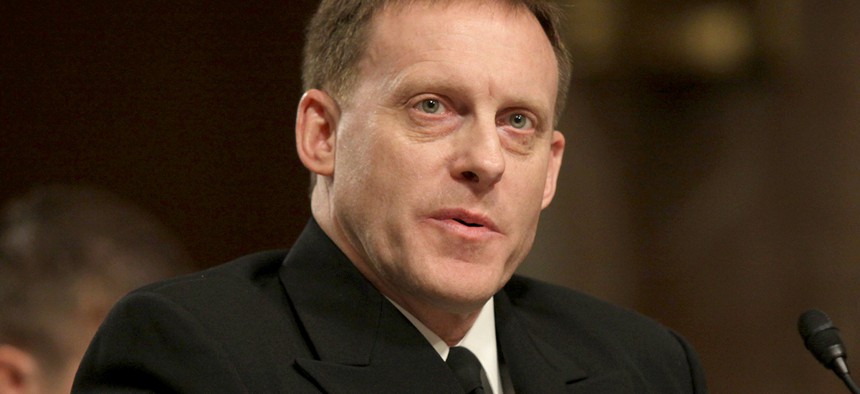Shutdown Threat Lifts but NSA Chief Says Cyber Workforce is Still Fed Up

Director of the National Security Agency Adm. Michael Rogers Lauren Victoria Burke/AP
“The single greatest perturbation has been even the hint of a shutdown,” said Adm. Michael Rogers, who heads both NSA and U.S. Cyber Command.
The head of the National Security Agency told members of the House Armed Services Committee Wednesday that congressionally mandated budget cuts and the threat of a government shutdown have upset its cyber workforce more than any other issues.
“The single greatest perturbation has been even the hint of a shutdown,” said Adm. Michael Rogers, who heads both the NSA and U.S. Cyber Command. “In the last week, I’ve had more agitation arguing this would be the second time in two years we’re even having this discussion.”
While it appears the government will avoid shutting down this time around, Rogers indicated that the talk of a shutdown has had a negative effect on cybersecurity personnel across the defense and military space.
Even without the threat of a shutdown, NSA has had problems recruiting, training and staffing elite cybersecurity professionals in part because those jobs are more lucrative in the private sector. Shutdown threats only add adversity to an already challenged dynamic.
“Even if we don’t shut down, we’re getting this close, and they’re saying, ‘I’m not sure I want to be a part of an organization with a lack of control and lack of stability,’” Rogers said.
Shutdown threats don’t help cyber recruitment efforts, either.
The Defense Department announced an effort in 2015 to boost its cyber troop size up to 6,200 – made of active duty military, civilian and contractors – by 2016. Cyber Command itself is charged with organizing some 133 cyber teams across all military branches, but Deputy Defense Secretary Bob Work said shutdown threats have impacted that effort.
“This is a very competitive field,” Work said. “Any hints of shutdown or sequestration – that will really set us back. We think we’ve got a good mission people want to participate in, but it’s not where we want to be.”
Work said the team won’t reach its allotted personnel until 2018, two years past the Defense Department’s initial goal.






